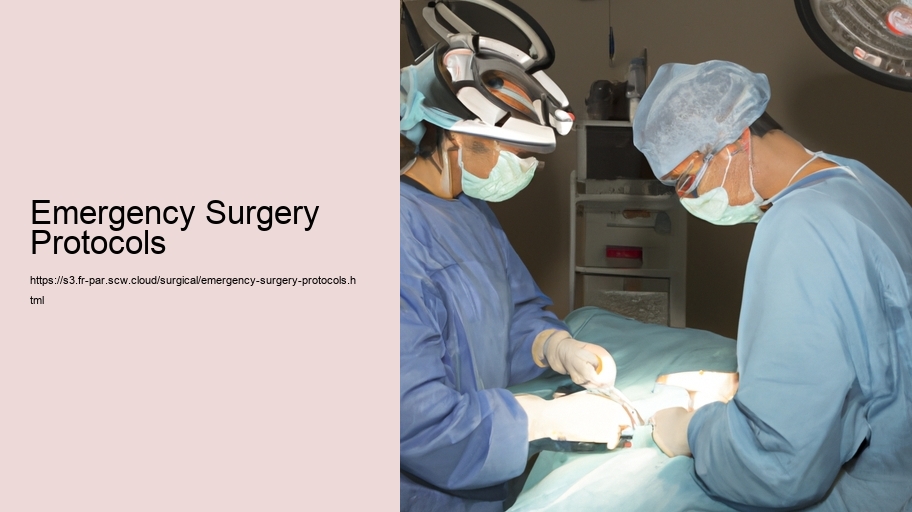Emergency Surgery Protocols: Ensuring Immediate and Effective Care
In the fast-paced environment of a hospital, emergency surgery protocols are essential guidelines that ensure the delivery of immediate and effective surgical care to patients in critical conditions. These protocols are meticulously designed frameworks that enable healthcare professionals to respond swiftly and competently during life-threatening situations. They are the backbone of emergency medical services, providing a structured approach to the chaos that can often accompany surgical emergencies.
At the heart of emergency surgery protocols is the principle of triage. Triage is the process by which patients are quickly assessed and categorized based on the severity of their condition. This ensures that those who need urgent attention receive it promptly, optimizing the use of available resources and improving patient outcomes. Triage is a dynamic process, continuously adapting to the flow of incoming patients and the changing circumstances within the emergency department.
Once a patient is identified as needing emergency surgery, the protocol kicks into high gear. Time is of the essence, and every second counts. The protocol outlines the steps to be taken to prepare the patient for the operating room. This includes stabilizing the patient's vital signs, administering necessary medications, and conducting essential diagnostic tests. These preliminary actions are crucial as they provide the surgical team with vital information about the patient's condition and help in planning the surgical intervention.
Communication is a critical component of the emergency surgery protocol. A clear and effective communication pathway must be established among the multidisciplinary team, which often includes surgeons, anesthesiologists, nurses, and other specialized personnel. The ability to convey information quickly and accurately can significantly influence the speed and success of the surgical procedure.
The operating room must be ready to receive the patient at a moment's notice. Therefore, part of the emergency surgery protocol involves ensuring that the surgical suite is equipped with all the necessary instruments and equipment, and that it is staffed by a team ready to perform the surgery. This level of preparedness allows the team to act without delay when a patient arrives.
Infection control measures are an integral aspect of the protocol. Emergencies do not exempt healthcare providers from adhering to strict sterilization and aseptic techniques. These measures are crucial in preventing postoperative infections and ensuring patient safety. The urgency of the situation does not compromise the quality of care; therefore, maintaining high standards of hygiene and cleanliness is mandatory.
Postoperative care is also outlined in the emergency surgery protocol. After the surgery, patients need to be monitored closely for any signs of complications. The protocol stipulates the postoperative monitoring guidelines, pain management strategies, and criteria for discharge or transfer to a different level of care. These guidelines help to provide a continuum of care that extends beyond the operating room.
Training and drills are conducted regularly to ensure that all team members are familiar with the emergency surgery protocols. These exercises help in fine-tuning the team's response and in identifying any potential areas for improvement. Being prepared for the unpredictable nature of emergencies is what enables the team to function like a well-oiled machine when the real situation arises.
In conclusion, emergency surgery protocols are a vital component of healthcare systems, ensuring that patients who require immediate surgical intervention receive the best possible care in a timely manner. These protocols are the culmination of careful planning, teamwork, and a commitment to patient safety and quality of care. As medical knowledge and technology advance, these protocols are continually reviewed and updated, reflecting the ongoing commitment to excellence in emergency medical services.
